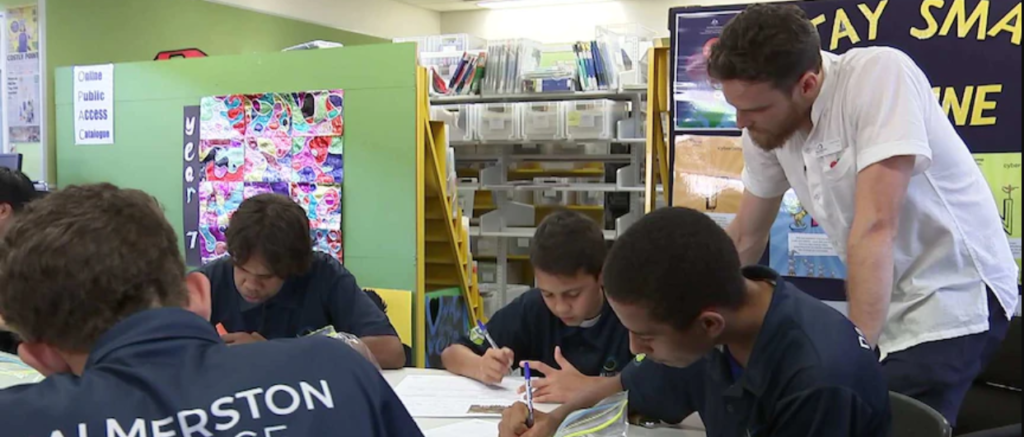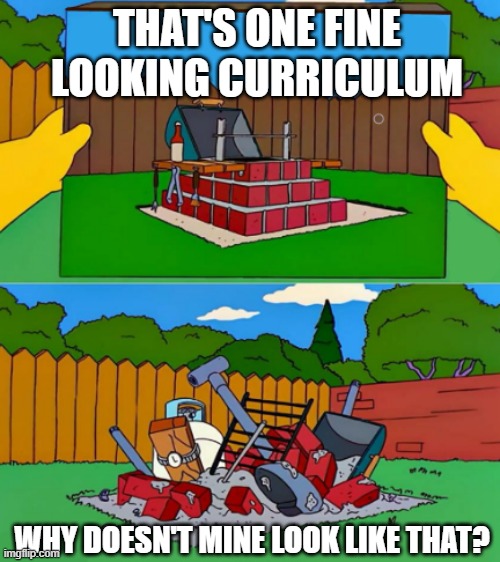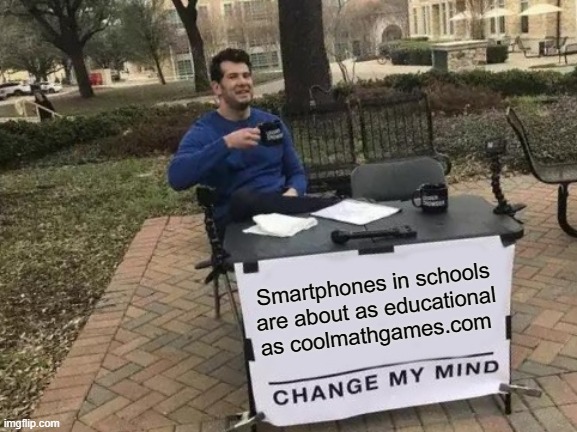Catfish: (slang) to deceive, swindle etc., especially by assuming a false identity online
Originally published: Open Forum
Over nearly eight years teaching in the Northern Territory, I have seen firsthand how some of the nation’s brightest, most resilient, and culturally rich young people are systematically set up to fail by a national curriculum which does little to practically support teachers on the frontlines.
This is not malicious intent on the part of the Curriculum Authority (ACARA), State, Territory or Federal Education Departments. Instead, the issue is driven by a fundamental disconnect between the political and academic talking points and the actual tools teachers need to do their job well. Overworked and frustrated, teachers are responding to this disconnect by fleeing the profession in ever greater numbers.
It doesn’t have to be this way. By reallocating attention and resources towards developing useable skills-centric classroom materials, this deficit can become an asset that helps make our education system more equitable, rigorous and successful – and helps keep teachers in the job.
Status Quo
So, what is the Australian Curriculum and why does it miss the mark for so many teachers?
The goals of our National Curriculum are noble. As a teacher I agree there needs to be a national document to ensure that young people from Alice Springs to Ascot Vale are offered equitable opportunities to engage with the skills, knowledge and understanding they need to be successful (1).
Where the current Curriculum falls down – especially in more challenging educational settings – is in its failure to consider the assumptions it makes and expectations it places on teachers. For each subject and year level, the Australian Curriculum proposes a dizzying collection of topics, skills and content to be taught. Critically, these ‘content descriptors’ are not weighted, sequenced or modelled for teachers (beyond occasional examples of student work).
The key feature somehow ignored by the politicians and curriculum authorities is the enormous labor to actually translate this ‘nonprescriptive map’ (2) into meaningful learning sequences. This labor is left up to teachers, in the best case working in small teams but more often toiling in isolation, racing against the next bell to have anything to present to their students.
Results
Rather than as a support for teachers who are delivering content, building relationships, providing feedback, contacting parents and developing young people’s socio-emotional skills, the Australian Curriculum has become a source of deep anxiety and confusion for many teachers– myself included.
Instead of responding to this teacher anxiety, the Curriculum has evolved over the past decade to become more ambitious in scope and size, to cram in more content and loftier expectations (3). This has created a bizarre scenario where on paper students are engaging with more complex and divergent ideas than ever before, while in reality even before the pandemic a 15-year-old in 2019 was a full year of learning behind where the average 15-year-old was in 2000 (4).
While declining academic achievements are evident at all proficiency levels, they are most concerning among the nation’s most disadvantaged students, many of whom are progressing through middle and high school struggling with basic literacy and numeracy (4).
Alongside these falling standards, the teaching profession itself is facing a crisis. A 2021 Australian Institute for Teaching and School Leadership report found that one-in-four teachers plan to leave the profession before retirement, with 71% of teachers identifying the excessive workload and associated stress as reasons for this (5).
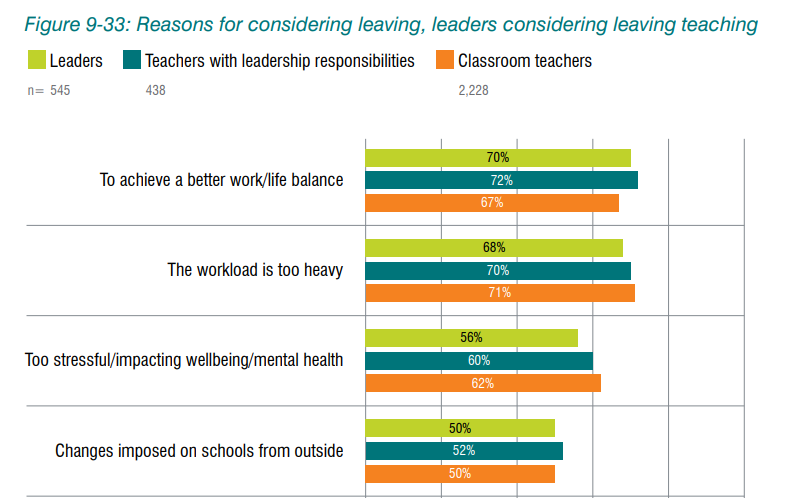
Diagnosis
As an early to mid-career teacher who has taken time out of the classroom, I can now see that it is the structure and implementation of the Australian Curriculum that drove many of my frustrations.
The key problem is the Australian Curriculum fails to provide a clear and useable structure for teachers to accomplish its plethora of objectives. In its most recent review, Curriculum authorities acknowledge the current curriculum is ‘cluttered’ and can appear ‘ambiguous’ (3). This is progress but it falls short of addressing what teachers actually need, which are expertly designed, research-backed learning sequences they can pick up and use with their students.
Disappointingly, the most recent revisions to the curriculum move further away from providing structured lessons and instead promote the use of open-ended inquiry tasks at all levels. There is nothing intrinsically wrong with having some tasks where students ‘explore’ or ‘investigate’ complex issues. The problem arises where these tasks are so over-represented they take the place of the actual targeted skill-building students need to access these tasks in the first place (6).
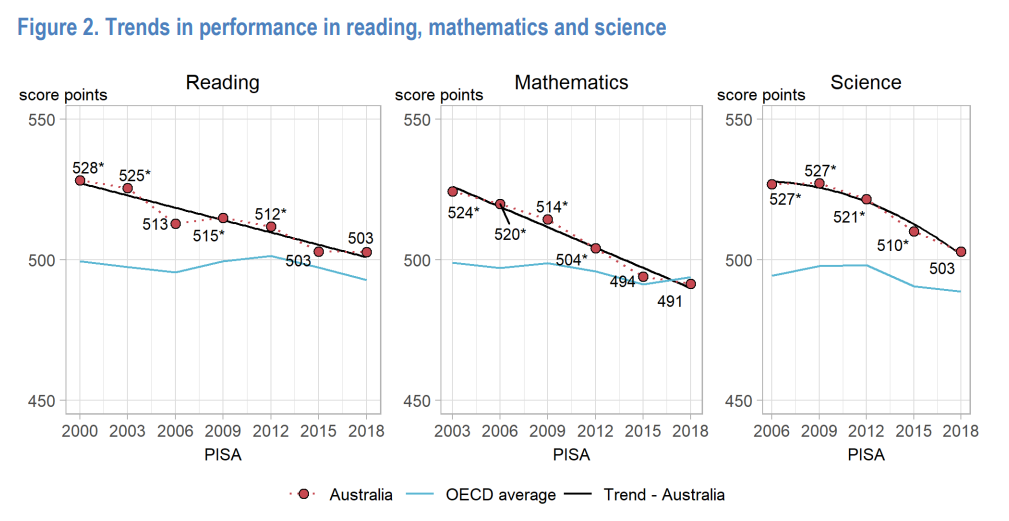
Solutions
How could the Australian Curriculum better connect teachers with the resources they need?
The first step would be for State and Territory Education Departments to identify the best programs already in use, so they can be improved, shared and scaled through the system. I envisage a team, led by actual classroom teachers alongside curriculum and subject-area experts, who test learning sequences and award the strongest programs a ‘gold standard’ certification.
Certified programs, whether teacher-built or commercial programs could be linked to the curriculum and be made available (but not prescribed) to teachers nationwide. Where this curriculum audit identifies gaps – and as a teacher I know there are entire sections of the curriculum lacking resources – teams could be commissioned to create resources following research-backed approaches.
The critical element is that these review and creation teams need to be led by classroom teachers. So many resources currently available are either teacher-built on the fly and half-finished or commercial products that rely on slick marketing rather than usability.
Such a system would rebalance the Australian Curriculum by focusing on the real resources teachers use, rather than hypothetical resources teachers are expected to somehow create. Instead of a ‘catfish curriculum’ which looks fantastic on paper but in reality disappoints, this would be a curriculum that builds on the strengths of the teaching workforce and empowers young people in all corners of Australia.
